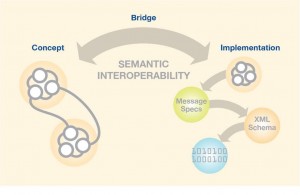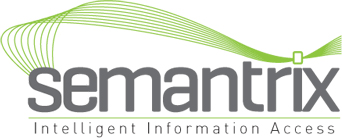The Semantic XML Message-Builder Workbench  solution provides effective information exchanges within and between organizations through re-use of information components and models. The Workbench makes it possible to link data from different systems enabling XML-based data exchanges that are specific to the local context while remaining compliant with industry and enterprise standards.
solution provides effective information exchanges within and between organizations through re-use of information components and models. The Workbench makes it possible to link data from different systems enabling XML-based data exchanges that are specific to the local context while remaining compliant with industry and enterprise standards.
Successful communication across company boundaries requires the ability to understand business semantics and the context of information received from the different parties. When the information comes from systems developed independently the data lacks common semantics, which raises challenges:
- Data is in many different systems not designed with sharing in mind.
- Business documents/messages need to be tailored for local use.
- There is a growing need for a common standard across organizations.
- Without semantic and structural alignment, data exchanges result in significant failures and overheads.
In a classical data integration approach, point-to-point mappings are created between the data feeds coming from the different systems to translate between each potential pair of formats. This labor-intensive approach is expensive and innefficient, error-prone and costly to maintain and not scalable.
TopQuadrant’s Semantic-XML Message Builder Workbench takes a new approach to data integration and exchange that re-uses information components for seamless data exchanges.
 |
The solution:
- Leverages the United Nations Centre for Trade Facilitation and Electronic Business (UN/CEFACT) “Core Component Technical Specification (CCTS)” standard to create re-usable Information Components
- Provides Information Analysts with the ability to tailor and customize Information Components to describe Business Information Entities specific to their systems and data
- Guides Information Analysts in construction of Business Documents representing data exchange messages
- Enables automatic generation of an XML Schema for each Business Document
- Manages code lists, data types, terms, qualifiers and constraints in the form of metadata
- Supports versioning, governance and difference comparisons
- Preserves traceability of the message content to the Information Component definitions making it possible to meaningfully interpret and integrate data from different systems
See also:
